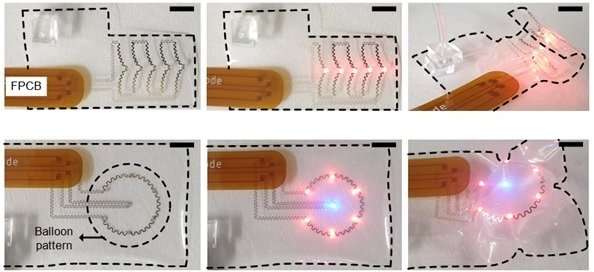A technology to transform 2-D planes into 3-D soft and flexible structures by engineering adhesion between thin-films

Professor Sohee Kim's research team in the Department of Robotics Engineering has developed a technology to produce flexible 3-D medical devices. It could be used in devices with embedded electrical functionality or soft robots.
The new technology selectively bonds polymeric thin films using plasma. Since this technology can manufacture 3-D flexible devices more easily than existing methods, it is expected to have a positive impact on future research.
Existing flexible 3-D structures involve manual handling such as directly gluing the top and bottom layers of the structure, or transferring pre-strained patterns on the substrate, which limits production efficiency at a very low level.
However, Professor Kim's team created 3-D flexible structures by generating covalent bonds only at the edges of patterns formed between two polymeric thin films with plasma and by injecting air into non-bonded patterns (namely, balloons) to inflate them. Moreover, the new 3-D structures can be used as sensors or actuators, because metal wires can be easily patterned inside and outside the balloons.
A customized 3-D device that is in contact with a complicated surface can also be produced using the technology developed by Professor Kim's team. Since the 3-D device is inflated like a balloon where the device is put on, it can have a customized shape along the curvature of a body part with a complex surface such as the brain.
In addition, wire patterns at the micrometer scale can be easily formed inside and outside the 3-D structure, which has been a challenge in the production of 3-D structures using conventional microelectromechanical systems (MEMS) technologies. The new technology could be applied, for instance, for pressure measurement inside the body including the cranium, devices with electrical stimulation and detection functions, and soft robots.
The results of this study were published in ACS Applied Materials & Interfaces.
More information: Hyunmin Moon et al. Transformation of 2D Planes into 3D Soft and Flexible Structures with Embedded Electrical Functionality, ACS Applied Materials & Interfaces (2019). DOI: 10.1021/acsami.9b09578
Journal information: ACS Applied Materials and Interfaces
Provided by Daegu Gyeongbuk Institute of Science and Technology (DGIST)




















